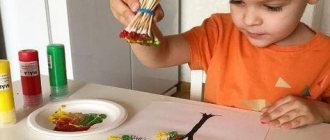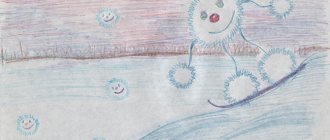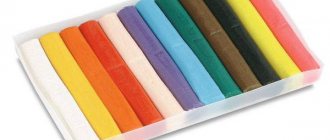DIY shadow theater in kindergarten
Master class “Shadow theater with your own hands”
Author: Oksana Seitievna Seitmedova, teacher, Gymnasium No. 1503 Description of the material: This material will be useful for educators and additional education teachers. Integration of educational areas: cognition, communication, socialization, artistic creativity. Goal: To stimulate children and their initiative in theatrical activities. Objectives: Develop imagination, creative abilities, develop the articulatory apparatus. To form in children a persistent interest in theatrical activities, a desire to participate in a common action, to encourage children to actively interact and communicate, teaches them to be able to communicate with peers and adults in various situations, to develop speech and the ability to actively build dialogue. Develop play behavior, aesthetic feelings, and the ability to be creative in any task.
Shadow theater is an ancient theater.
Since time immemorial, shadow paintings have been shown in India, China, Java and Turkey on the street at night under the light of an oil lamp. For work we will need:
- cardboard box, - colored paper, - glue, - scissors, - figured hole punches, - parchment paper, - outline drawings of the heroes of the fairy tale “Kolobok”.
Carefully cut the edges of the cardboard box, then cut out the bottom of the cardboard box (as in the photo). This gives us the basis for our craft.
After pasting the base with blue paper. Then cut out a rectangle of the desired size from parchment paper and glue it tightly to the inside of the base. Next, we “cut out” the branches and butterflies using figured hole punches, and proceed to decorating the base.
Now let's start making characters. We cut out the outline drawing (since I don’t know how to draw, such drawings help me out). Then we apply the finished drawing to thick black paper, trace it with a simple pencil and cut it out.
Then we roll a roll out of white paper, carefully apply glue to the edge (as in the photo). Next, cut one side evenly with scissors into narrow strips 2-3 cm wide. Apply glue and apply it on the back side to a figure made of thick black paper. The characters are ready! We chose a fairy tale, assigned roles and learned them. We invited guests from the younger group. I invite you to see what we came up with! Shadow theater fairy tale "Kolobok". Thanks to all!
We recommend watching:
Theatrical activities in kindergarten Scenario of a puppet theater in kindergarten Scenario of a theater festival based on Pushkin's fairy tales for older preschoolers Musical-themed fairy tale for older preschoolers with elements of life safety for preschoolers
Similar articles:
Theatrical performance script for middle school children
Puppet theater in kindergarten. Scenarios
Position of screen, light source and characters
The screen is placed between the audience and the lighting fixture. The light source is placed slightly to the side, not too close to the screen itself. Then the shadows will be clearer. Distance – about 25 cm.
The shadow changes depending on the distance between the figure and the light source. To make the wolf, for example, appear larger, you need to move the character further away. For the first productions, it is advisable to use a few characters - two or three are enough. With practice, you can create more complex representations.
Complicated version
You can create a shadow theater for children using templates with your own hands in half an hour, but if you have more time, it’s worth thinking through additional details. For example, add decorations. They are created from cardboard and attached tightly to the screen using tape or paper clips. Then the decorations will not fall unexpectedly.
It’s easy to “revive” the figures - make them more mobile using soft wire. It is used to wrap arms, legs, wings and other parts.
It’s easy to “play up” an evening with a performance: decorate the curtain and draw bright tickets. And if several performances are planned, print out programs for spectators. And, of course, you need an intermission, during which you can treat the audience to delicious home-cooked food.
Scene selection
The best place to start is with folk tales. They have a simple plot and not many characters. By the way, in China, where shadow theater comes from, up to a thousand figures could be used during one performance.
Before giving a performance, you need to understand the mystery of shadow theater. For example, in order for a doll to disappear unnoticed (or suddenly appear), you need to turn it with its edge towards the screen and remove it.
Before giving a performance, you need to learn the secrets of shadow theater. For example, in order for a doll or decoration to disappear unnoticed (or suddenly appear), you need to turn it edge-on towards the screen and move it.
So that the audience does not languish while waiting for the “actors,” the dolls must be arranged in order in advance. When creating a theater on sticks with your own hands using a template, it is worth adding additional effects - sound. You just need to choose the right music. And if you move the light source, you can depict bad weather, a storm or snowfall.
Shadow theater has not changed much since ancient times. The lighting setup and use of silhouettes are exactly the same. But now for home performances it is much easier to find and print the necessary stencils. And in the past, dolls were created by masters who worked on the figures down to the nuances.





